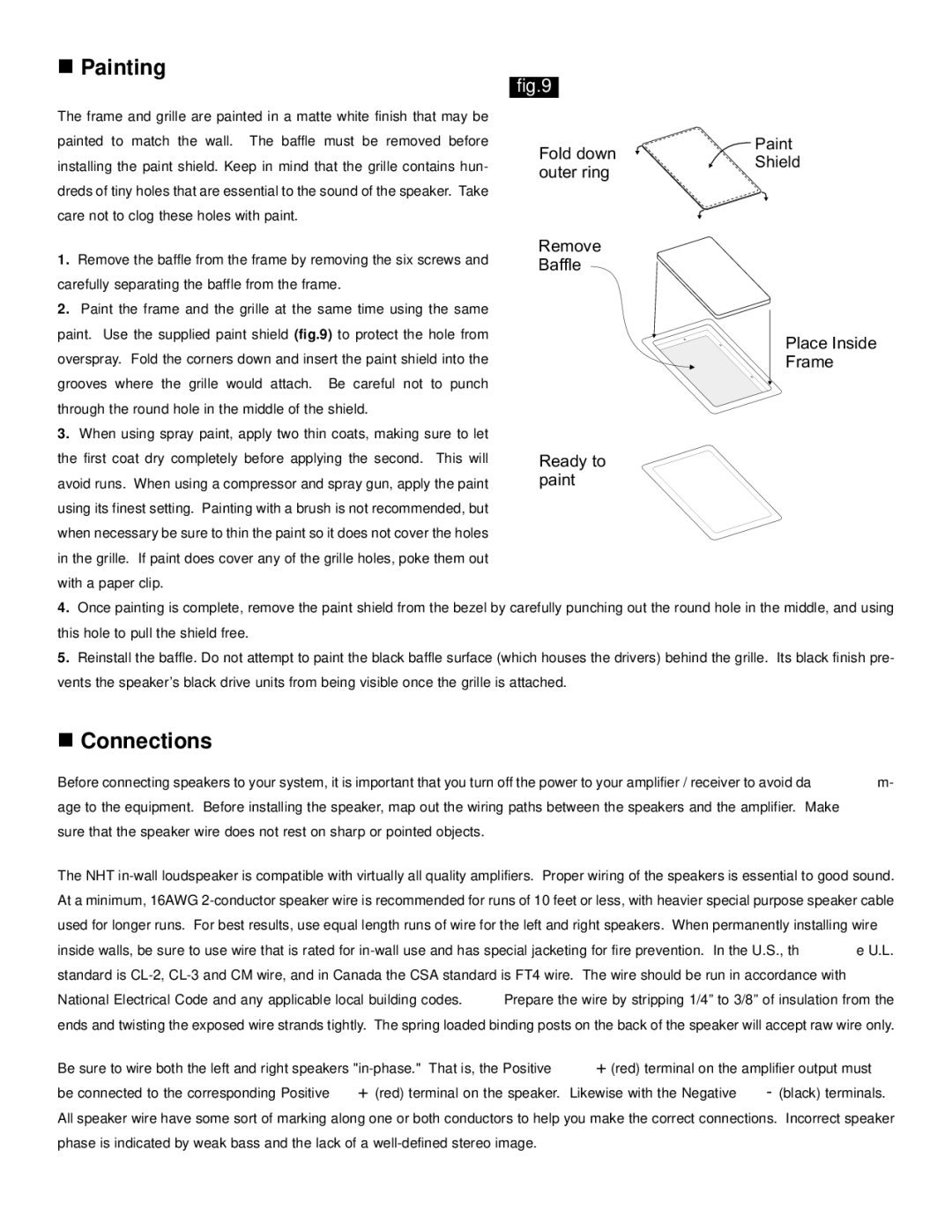
!Painting
fig.9
The frame and grille are painted in a matte white finish that may be painted to match the wall. The baffle must be removed before installing the paint shield. Keep in mind that the grille contains hun- dreds of tiny holes that are essential to the sound of the speaker. Take care not to clog these holes with paint.
Paint Shield
1. Remove the baffle from the frame by removing the six screws and carefully separating the baffle from the frame.
2.Paint the frame and the grille at the same time using the same paint. Use the supplied paint shield (fig.9) to protect the hole from
overspray. Fold the corners down and insert the paint shield into the grooves where the grille would attach. Be careful not to punch through the round hole in the middle of the shield.
3.When using spray paint, apply two thin coats, making sure to let
the first coat dry completely before applying the second. This will avoid runs. When using a compressor and spray gun, apply the paint using its finest setting. Painting with a brush is not recommended, but when necessary be sure to thin the paint so it does not cover the holes in the grille. If paint does cover any of the grille holes, poke them out with a paper clip.
4.Once painting is complete, remove the paint shield from the bezel by carefully punching out the round hole in the middle, and using this hole to pull the shield free.
5.Reinstall the baffle. Do not attempt to paint the black baffle surface (which houses the drivers) behind the grille. Its black finish pre- vents the speaker’s black drive units from being visible once the grille is attached.
! Connections
Before connecting speakers to your system, it is important that you turn off the power to your amplifier / receiver to avoid dam- age to the equipment. Before installing the speaker, map out the wiring paths between the speakers and the amplifier. Make sure that the speaker wire does not rest on sharp or pointed objects.
The NHT
Be sure to wire both the left and right speakers
All speaker wire have some sort of marking along one or both conductors to help you make the correct connections. Incorrect speaker phase is indicated by weak bass and the lack of a
